Shark Valley offers tram tours that last about two hours. The tour is led by a naturalist, in our case a very knowledgeable guide named Bill, who took the visitors through the northern region of the park. As Bill was identifying plants and animals that we encountered on our travels, I was snapping furiously. What I noticed most was the serene environment which allowed the birds in particular, to roost. In my photography experience, I'm used to seeing birds fly frantically to escape the peering eyes of the unwanted. In this park, they were comfortable, settled and beautiful. The first two images demonstrate that environment:
( Remember to click on an image for a large view)
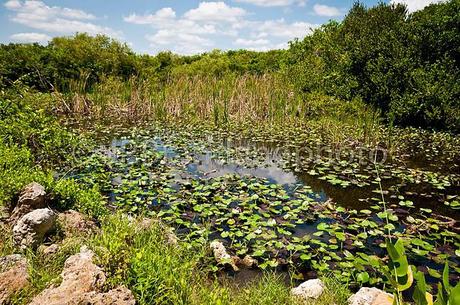
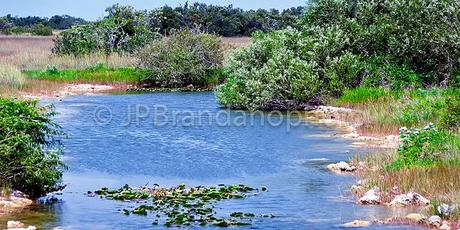
As we proceeded along, I began to notice some stunning bird behavior. The first bird was an anhinga. The anhinga is a large bird with a long S-shaped neck and long pointed bill. The males have grayish-black feathers with a greenish shine to them. They have large wings with silver-white feathers on the top side. Females have a light tan head, neck and chest and a black stomach.
Both male and females have long fan-shaped tail feathers. The anhinga has poorly developed oil glands and its feathers aren't as waterproof as other water birds so it will often perch in a tree or on the ground and open its wings to dry its feathers and warm its body. I was able to capture that behavior here.
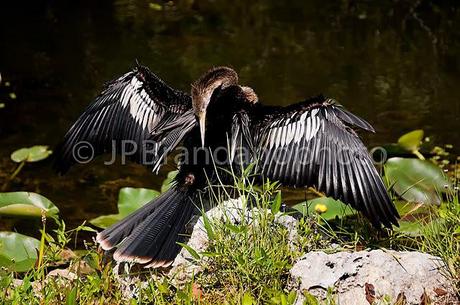
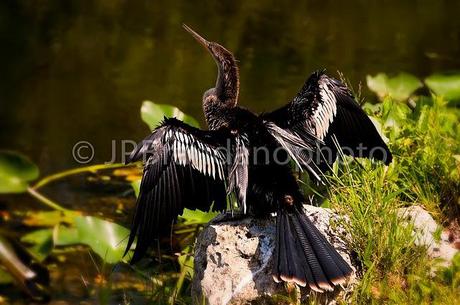
My next encounter was that of a little blue heron. The little blue heron is a small heron. It is about two feet tall with a wingspan of about forty inches. It has slate-blue feathers with a maroon neck and head. Its bill is gray with a black tip and curves slightly downward. It has gray to blue legs and feet. Males and females look alike.
The little blue heron eats fish, crustaceans, amphibians, insects and reptiles. It stands in shallow water and waits for its prey to go by and then it grabs its prey with its pointed bill. The little blues have a lifespan of about seven years.
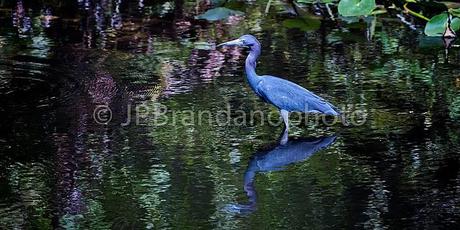
My last images are those of a Great Blue Heron. Great blues reach about four feet in height and have wingspans of about six feet. Because of hollow bones, adults weigh an average of only five pounds. They have long necks and a long bill adapted for grasping prey.
Great blue herons are stand and wait predators. They can remain motionless for long periods of time waiting for prey to get close.
Their large size enables them to feed on a variety of prey including fish, frogs, turtles, young birds and bird eggs, snakes, insects and other small mammals. They feed during the day or night generally within three miles of their colony. They tend to be lone feeders but if food is plentiful, they will feed with others.
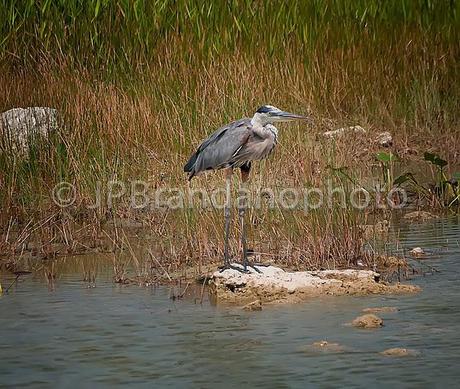
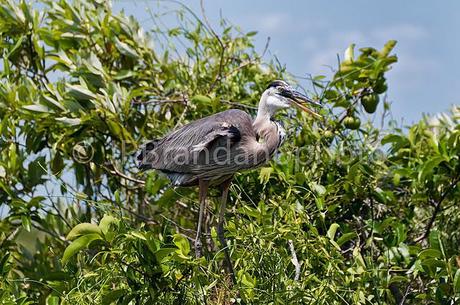
I have to admit, Great Blues are some of my favorite birds. Because of their ability to wait, I am encouraged to stare at them for hours. The amazing thing about them is because they are so acclimated to people they will not be disturbed if you watch them hunt and for that I am eternally grateful.
I hope you have enjoyed my visit through the everglade world!

